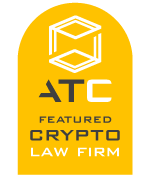
We are now approaching the halfway mark of 2018 and, other than the developments that I predicted in my January article, not that much else has changed.
The crypto markets continue to be vulnerable to a variety of market influencers; despite some enforcement there is still a vast degree of regulatory uncertainty; and very few, if any, of the companies that raised millions of dollars last year have produced a finished platform that can demonstrate a convincing, practical use of truly distributed ledger (DLT) and Blockchain technology.
So what can we expect in the rest of this year?
DISCLAIMER: Apologies if I offend anyone, I’m going to tell it like I see it.
Token Prices
In 2017 there were a large number of individual “public” projects (ie projects that have held public token generation events, or Initial Coin Offerings/ICOs) with an aim to be truly decentralized and run by a foundation. Though social media is abuzz with progress and team reports, very little has been produced in terms of real, practical results. This has led to investor fatigue.
In most other industries, if a company raises substantially more money than is required to actually develop the project, and then does not produce any substantial results, investors in that industry lose confidence in the ability of future entrepreneurs in that space. Large, high profile projects (I will not mention names) which raised millions in 2017 are astonishingly still spending money on marketing (at the behest of the PR/marketing firms they hire) when they should be spending it on the business and tech development. Although it is important to stay “on the scene”, it is clear that due to the surplus of funds being raised these project teams inevitably seek fun, tax deductible ways to spend the money. Unfortunately, that type of activity has led to investor atrophy and regulatory scrutiny.
Couple that with the way altcoins follow the price of Bitcoin and you have a market that is still subject to the whim of the few “whales” who own large quantities of Bitcoin. Token prices are therefore destined to remain volatile until a few other things happen (see below).
The Future of Token Project Investment
Token investors have become impatient and want results. It is a wonder how projects which have raised so much money in the last year continue to invest in parties and conferences to market their projects when that money should be invested in tech development. This is why smart investors are moving towards private projects, because they run leaner, they are more efficient and when equity is at stake the management team is under the gun to produce results. The goal of a truly decentralized platform is a lofty one, but remember: the most successful Blockchain project thus far, Bitcoin, did not require an ICO and did not need millions of dollars to get off the ground.
Of the numerous white papers and project pitches I have seen in the past twelve months, very few tended to have had budgets or focus on the technology, just soft and hard cap raise goals and flowery marketing language. They want to raise millions (or more) without any cogent plan of how they are going to spend it; rather the focus tends to be on how they will divide the proceeds amongst the founders and advisors. Those who have marketed a decentralized platform that is governed and maintained by the token holders (ie a “Foundation”) generally do not have the same mentality as they are not beholden to anybody. If, and when, these projects are ever audited by investors, the inefficiencies will come out in the wash, meaning there will likely be more class action and oppression law suits from the public to come, in addition to regulatory enforcement by the government.
Private Raises, Private Ledgers and Enterprise Applications
In 2016 and early 2017, the word Bitcoin was often associated with criminal activity such as money laundering and purchasing illicit drugs on Silk Road. DLT enthusiasts spent much of 2017 trying to whitewash the nefarious reputation the tech had. While the focus in 2016 was Bitcoin, the focus in 2017 was Blockchain, DLT and the benefits of the technology. The focus in 2018 has been implementing the use of the technology, which has had unexpected results.
What began as an anarchic (in a good way), freedom focussed movement has not been coopted by big business. The 2017 defence of the technology was based in its efficiency enhancing potential. As a result Enterprise solutions applying the technology to streamline large organizations and make them more efficient (otherwise known as “Private Blockchains”, a seemingly oxymoronic statement) is now the focus. Private funding, as opposed to public ICOs, has catalyzed the development of the technology in the direction of private enterprise and allowed those companies to side-step securities regulation by not offering to the public. These raises are focussed on soliciting investment from markets such as accredited investors which are considered exempt from most of the securities requirements.
Thus, the most prevalent solutions using the technology in the second half of 2018 will be those developed efficiently by private organizations as opposed to inefficiently by “public” foundations, which struggle to produce a finished product with actual utility. This will also result in more intellectual property protection as opposed to open source development as the potential for profit becomes more and more apparent.
Marketing Side-Show
One of the most amusing of all the phenomena that have emerged from the DLT market is the development of a niche marketing and sales industry. The result has been the creation of “experts” who are created by social media marketing efforts.
It is understood that this is still a young industry and many experts have yet to emerge; however, marketing groups have certainly seized every opportunity to promote this new field. For example, the number of meetups, conferences and other convention-style events focussing on DLT and related topics demonstrates that, as one such expert on twitter noted, the biggest bubble in this space is conferences!
The few marketing professionals who got in early enough made a name for themselves and were able to promote the use of the technology on behalf of specific projects. Now, and in the second half of 2018, we are bound to see more marketing initiatives that, at their most basic level, will attempt to appeal to a new generation by adding the word “Blockchain” or “Block” to whatever it is they are attempting to market or promote (eg Blockchain Web Design, Blockchain Marketing, Blockchain Law, Blockchain Bakery, etc.)
So why is this a problem? Given the deluge of new market participants it has become increasingly difficult for consumers to differentiate those who understand the industry from those who do not. The marketing materials created by those who do not understand the industry skew the public knowledge of the technology and its uses. This has led to public misinformation and, unfortunately, further government scrutiny.
It is important to note that, unlike most legislation and regulation which is reactionary, almost all governmental intervention in this space has been based on FUD and ignorance as a result of the marketing maelstrom caused primarily by fraudulent ICOs. One of the best examples of this is how a token generation event became known as an “ICO”. ICO sounds like IPO, which at first was a clever marketing maneuver to add legitimacy to an unfamiliar market, but which was also one of the reasons the government became involved in regulating them in the first place.
A critical analysis of tokens versus shares reveals that they are very different concepts with fundamentally different functions. Token holders are not owners of the business; shareholders are. Applying the “Howie Test”, a US Supreme Court case from over seventy years ago, is not properly applicable to the situation today. I anticipate that misinformation will proliferate exponentially in the second half of 2018 causing more government scrutiny.
Tax Crackdown
There will be audits…big time. All the people who realized massive gains in 2017 will have filed their returns by April, leaving the tax authorities plenty of time to analyze and audit how honestly people have been in declaring their gains. All governments need lots of money, and unlike the securities regulatory regime which is designed to protect the public, the tax regime is designed to maximize revenues from the public.
With all this new money being generated from an entirely new industry, this is a potential Cash Cow for government coffers. We can expect to see massive audits of both individuals and businesses (including those that held ICOs in 2017) in the second half of 2018 and the beginning of 2019. On the bright side, this will at least provide us with more clarity on how the government treats these gains and how it will be proceeding with audits. In addition, if the government ends up collecting more money from its efforts, it may look more favorably on the practice of trading cryptocurrencies, though it may require exchanges and other trading desks to report trades and other information in order to keep an eye on the public activity, and it may outlaw truly anonymous tokens.
This articles started off by saying that not much has changed since January. The fact that not much has changed has actually been valuable in confirming that this is the way things are going to be – at least for a little while. As private enterprises embrace and use the technology, public raises will dwindle and government scrutiny of those that proceed will heighten. We will likely see more IPOs as opposed to ICOs since the securities rules will apply regardless. Tax authorities will be in full battle array, so make sure you seek good legal and accounting advice on your activities.
Aaron Grinhaus is an experienced Fintech advisor and tax lawyer with a focus on crypto asset structuring and ICO advisory. If you have questions about cryptocurrencies, ICOs or anything blockchain related, please call or email us to see how we can help.
PLEASE NOTE: THIS IS NOT INTENDED TO BE LEGAL ADVICE AND SHOULD NOT BE RELIED ON AS SUCH. IT IS IMPORTANT THAT YOU CONSULT WITH A LICENSED PROFESSIONAL.





